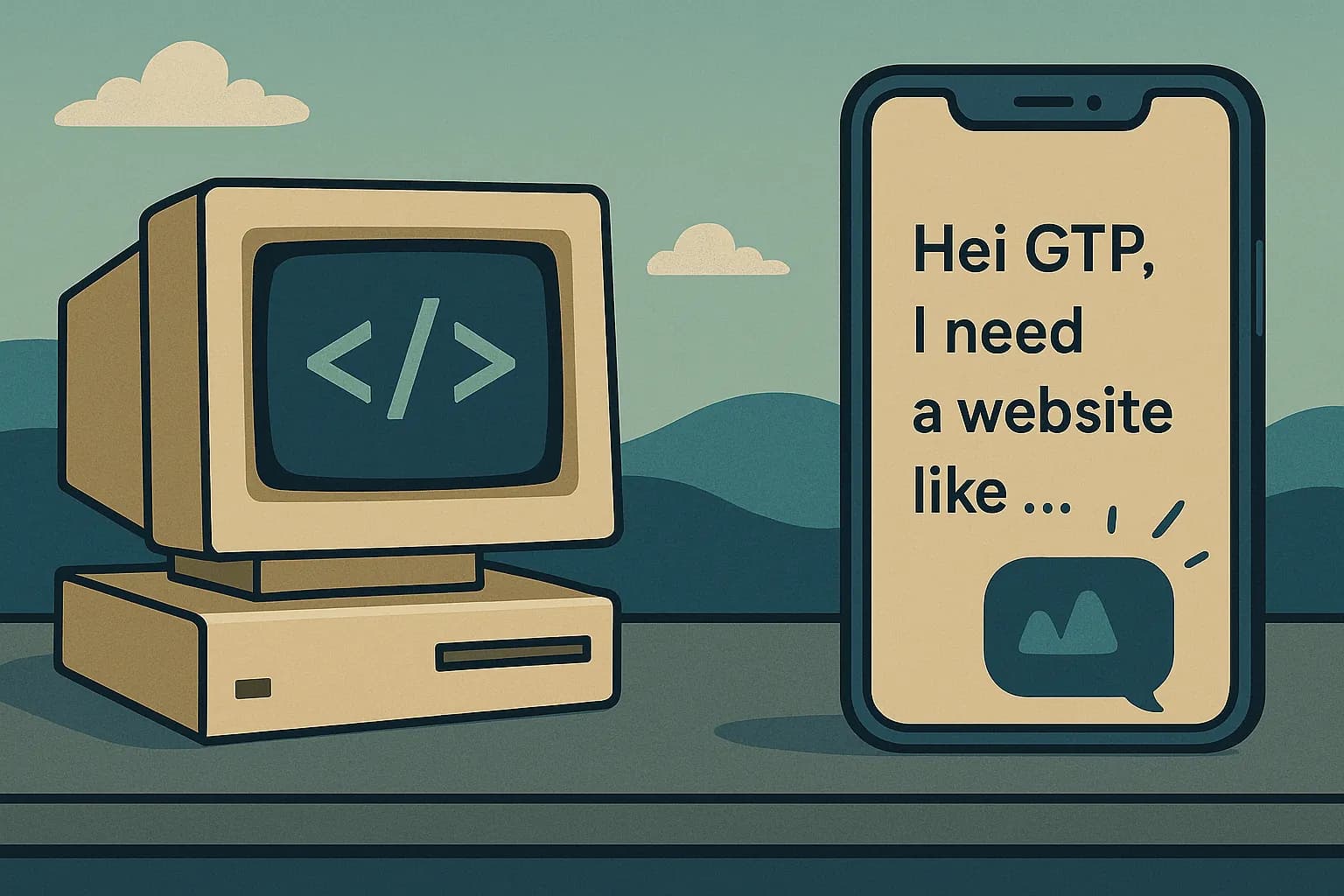I WAS THERE: The History of the Web
4 min read

The evolution of the web was anything but a straight line. From the birth of HTML to the chaos of browser wars, the rise and fall of Flash, and the utility-first elegance of Tailwind — it’s been a wild ride.
We’ve seen developers lose their hair over IE6 and tear up with joy at their first successful JSON response.
Every new technology brought hope; every new standard brought heated debates.
I was there.
There was code. There was chaos. But somehow, things worked. Let’s take a walk down memory lane.
📜 Timeline of the Web
1991 — HTML is born
Tim Berners-Lee published the first web page. No styling, no interactivity — just pure potential. A revolution dressed as Hello World.1993 — Mosaic browser
Images arrived. Clicking links hurt a little less. The web started evolving from document collection to user experience.1995 — JavaScript (Mocha → LiveScript → JavaScript)
Brendan Eich wrote a scripting language in 10 days. Ever since, frontend developers haven’t known peace.1995–2000 — IE vs. Netscape
Netscape took the lead, then Microsoft buried it by bundling IE with Windows. Standards? What standards?1996 — CSS
A noble attempt to separate content from presentation. Looked good on paper — the browsers had other ideas.2000–2005 — Rise of MySQL
Dominated the LAMP stack alongside PHP. Lightweight and everywhere.2000–2005 — The Macromedia era
Dreamweaver, Flash, Fireworks — web design got flashy and visual. The drag-and-drop website craze began.2001 — IE6
The dark plague. I still remember the sheer hours spent wrestling with its broken box model, the conditional comments littering my HTML like arcane sigils...2005 — The AJAX revolution
Asynchronous requests without full page reloads. “You submitted a comment without a refresh?” — pure magic.2006 — jQuery
The$(document).ready()era. DOM pain reduced. Community exploded (then imploded).2006 — MooTools
Cleaner, more structured, but jQuery stole the spotlight. Deserved better.2006 — Adobe acquired Macromedia
Flash’s fate was sealed. HTML5 started its ascent. Apple rejected Flash on mobile.2006–2010 — Rise of JSON
When XML got out of hand, JSON showed up. Lightweight, human-readable. “Remember XPath? Yeah, no thanks.”2006 — ActionScript 3.0 & ECMA alignment
Strongly typed, class-based, JS-adjacent. It was TypeScript before TypeScript.2007 — Flash & ActionScript peak
Rich interactions and animations! Then JavaScript matured, mobile rose, and Flash flatlined.2008 — Bootstrap (by Twitter)
Responsive design became accessible. Grid systems became religion.2008 — Google Chrome + V8 Engine
Fast, slick, and updated automatically. Finally, sanity in browser land.2009 — Node.js
JavaScript hit the server. “Wait, I write both frontend and backend now?”2009 — Oracle acquires Sun (Java + MySQL)
The open-source world held its breath.2010 — npm
Package manager of the people. Small utilities, big problems.2010 — AngularJS
Declarative bindings, controllers, dirty checking — the SPA era had begun.2011–2014 — Framework flood
Ember, Knockout, Backbone — everyone wrote a framework. Frontend identity crisis ensued.2010+ — MongoDB and the NoSQL rise
JSON met databases. Structure? Optional.2010+ — Python & Django
Clean syntax, batteries included. Later got async powers too.2011 — Node.js + Express
Minimal, fast, event-driven. RESTful APIs found their backbone.2012+ — Laravel and the PHP renaissance
Elegant syntax, Eloquent ORM, Blade templates — PHP felt cool again.2013 — The Ruby on Rails effect
Convention over configuration. Startups loved it.2013+ — RESTful API madness
Every app had aGET /v1/user/me.2013 — React
Facebook shook things up. Virtual DOM changed the game.2015+ — ASP.NET Core & .NET revival
Cross-platform! Cloud-ready! Enterprise-worthy!2015 — Microsoft buries IE with Edge
Declare a holiday: Independent Web Day — June 15, 2022.2015 — ES6
JS got its groove back —let,const, arrow functions.2016 — TypeScript rising
Typed JS, backed by Microsoft..tsfiles became the new normal.2016 — Vue.js, 2019 — Svelte
Lightweight, community-driven, and oh-so-satisfying to write.2017 — Next.js
SSR, file-based routing, fullstack in a box.2020 — Remix
Rethought data-fetching. Route loaders and progressive enhancement FTW.2020 — Tailwind CSS
Utility-first philosophy ended CSS fatigue.2020+ — Future of the Web
React Server Components, Edge Functions, WebAssembly, AI-powered UI, Vite, Bun, TurboPack...
I’ve been here for 25+ years. I’ve coded, optimized, and survived.
Each phase brought a new headache, but each headache came with a little triumph.
“The web has never been this beautiful, never been this chaotic.”
...hey Gem/GPT/Claude, I need a website like ...
Also, this post is posted via a custom GPTs. New ERA is comin, why we need interfaces while we can do it by talking.